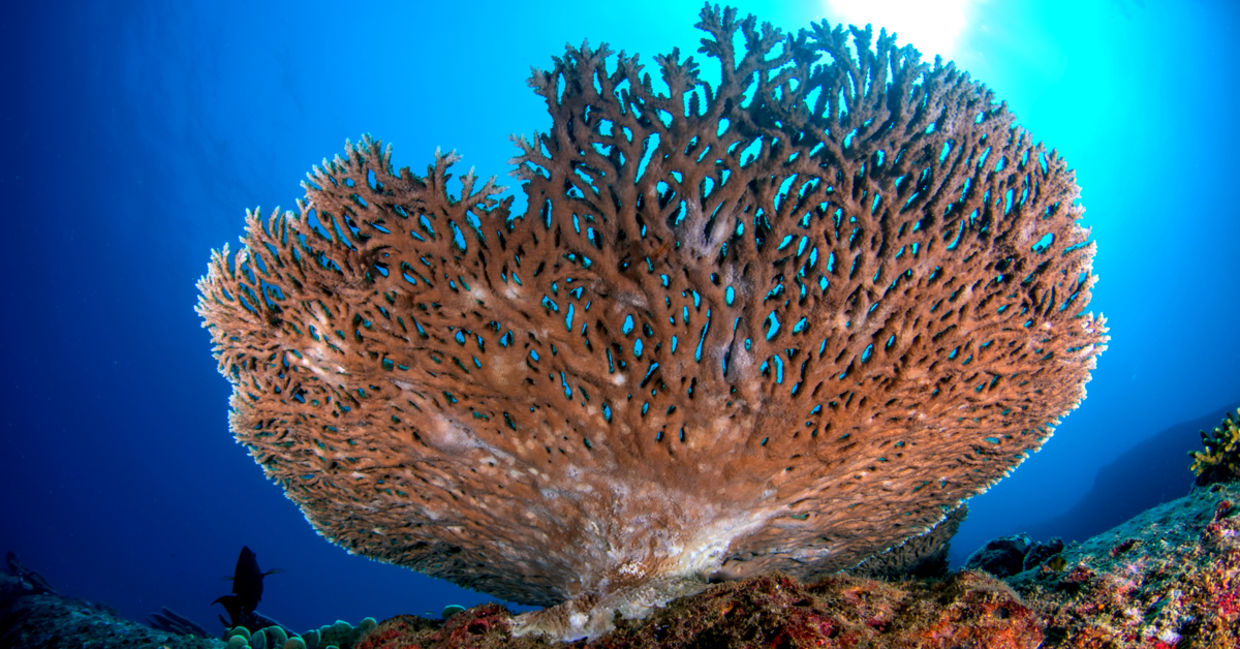
(Krzysztof Bargiel / Shutterstock.com)
On a recent 21-day voyage along the length of the Great Barrier Reef, an international team of scientists discovered dozens of new coral species. And during the trip, the discoveries kept on coming: “On almost every dive we were finding species that aren’t in the books,” said Professor Andrew Baird from the ARC Centre of Excellence for Coral Reef Studies at James Cook University (Coral CoE at JCU).
Coral ecosystems offer multiple benefits including protecting coastlines from storms and erosion, and providing habit and spawning grounds for multiple fish species, sustaining fishing, recreation and tourism. So this is great news at a time when the threats to coral, including pollution and rising temperatures from global warming, which impact the algae that sustain corals causing a phenomena known as “bleaching”, regularly grab the headlines.
Joining researchers from the Coral CoE at JCU on the first voyage of its kind since the 80s, were scientists from Queensland Museum (QM), University of Technology Sydney (UTS) and the King Abdullah University of Science and Technology (KAUST) in Saudi Arabia. The team’s trip took them from the Capricorn Bunkers of Gladstone to Thursday Island in the Torres Strait late in 2019.
The researchers emphasize that the new coral species discovered, which provide a wealth of new material for scientific study, indicate a greater biodiversity: “The new species we found means that the biodiversity of some groups is up to three times higher than we had thought,” said Dr Francesca Benzoni, from KAUST.
TREASURE TROVE: The Great Barrier Reef is now more diverse than ever before, with the discovery of new coral species. pic.twitter.com/DUAd7k3CQX
— Erin Buchan (@Erin_Buchan9) January 22, 2020
JCU PhD student Jeremy Horowitz revealed that the team also discovered several species not previously spotted on the reef. They are conducting the first ever survey of black corals they saw there, usually found in deeper, darker waters, for instance.
This discovery of these new species comes at a time when the existing classification of corals is being re-evaluated due to recent molecular advances. Professor Baird explains, for instance, that these advances together with a closer examination of the shape of the coral, show that hard coral species, Acropora hyacinthus (seen below) is starting to be better understood: “What we once thought was a single species is potentially five different species—some with a very limited geographical range,” he said.
Professor Baird emphasizes that an understanding of the diversity of the species on The Great Barrier Reef is a crucial step in the optimal management of this global treasure (also a World Heritage-listed site). The reef, home to over 1500 species of fish as well as the largest collection of coral in the world, attracts almost two million visitors, snorkelers and scuba divers each year.
He is eager to see the categorization of species diversity and their distribution becoming an urgent research priority very soon. This will lead to optimal management and conservation of a beloved ocean marvel and vital ecosystem.
YOU MIGHT ALSO LIKE:
This Year’s Reprieve for Iceland’s Whales May Last Forever!
You Can Help Reforest the Oceans by Using This Search Engine
This Happy Lab Accident Could Save the World's Coral Reefs







